The 2020 NFL draft class is not offering the first wave of elite athletes who can line up and serve in multiple roles on a football field. However, with each passing year there seem to be more and more college players whose skill set expands their abilities beyond a defined, singular position. In an era where position flexibility is at a premium with up tempo offenses and subpackage defenses, the elite athlete who can serve a multitude of roles is more coveted than ever.
This year's draft has close to 20 such prospects, some of whom we'll profile later. But is football headed down a path where it looks more like basketball on grass?

Tapping into the multi-faceted talent
If you ask NFL general managers they're not ready to call NFL football a position-less game just yet, but they do believe premium athletes are essential on both sides of the ball.
"I don't think position-less is the right word, but as NFL offensive styles evolve to more of what is run at the high school and college levels, defenses need versatile defenders that can play in space," said LA Chargers GM Tom Telesco. "Being big and stout down the middle at defensive tackle, linebacker, and strong safety has evolved into those players being able to play with length, speed and range as well as strength."
That necessity is part of what prompted Telesco to take S Derwin James with the 17th pick in the 2018 draft.
"A strong safety who can cover a tight end or wide receiver as well as tackle like a linebacker in the box (is valuable)," said Telesco. "Those are difficult combinations to find obviously but the more versatile chess pieces you have allows the defensive coordinator more flexibility in how he attacks the offense."
Scroll through to view photos of prospects that some mock draft experts have Buffalo selecting in the second or third round of the 2020 NFL Draft.

J.K. Dobbins | RB | Ohio State
Dobbins certainly fits the mold of a three down back that teams use in a variety of ways in today's NFL. He could be a nice addition for Buffalo on offense to go with their current group.
Ohio State running back J.K. Dobbins (2) during the first half of the Fiesta Bowl NCAA college football game against Clemson, Saturday, Dec. 28, 2019, in Glendale, Ariz. (AP Photo/Rick Scuteri).

J.K. Dobbins | RB | Ohio State
Dobbins certainly fits the mold of a three down back that teams use in a variety of ways in today's NFL. He could be a nice addition for Buffalo on offense to go with their current group.
Ohio State running back J.K. Dobbins (2) goes in for a touchdown against Wisconsin cornerback Faion Hicks (1) during the first half of the Big Ten championship NCAA college football game, Saturday, Dec. 7, 2019, in Indianapolis. (AP Photo/Michael Conroy)

J.K. Dobbins | RB | Ohio State
Dobbins certainly fits the mold of a three down back that teams use in a variety of ways in today's NFL. He could be a nice addition for Buffalo on offense to go with their current group.
Ohio State running back J.K. Dobbins runs for a 33-yard touchdown against Michigan in the second half of an NCAA college football game in Ann Arbor, Mich., Saturday, Nov. 30, 2019. (AP Photo/Paul Sancya)

Marlon Davidson | DE | Auburn
Davidson plays the run very well on the edge of the defensive line, which could make him an option for the Bills on Day 2. He was certainly productive against some of the top offenses in the country as well.
Auburn defensive end Marlon Davidson (3) lines up for a play during the second half of an NCAA college football game against Kent State, Saturday, Sept. 14, 2019, in Auburn, Ala. (AP Photo/Butch Dill)
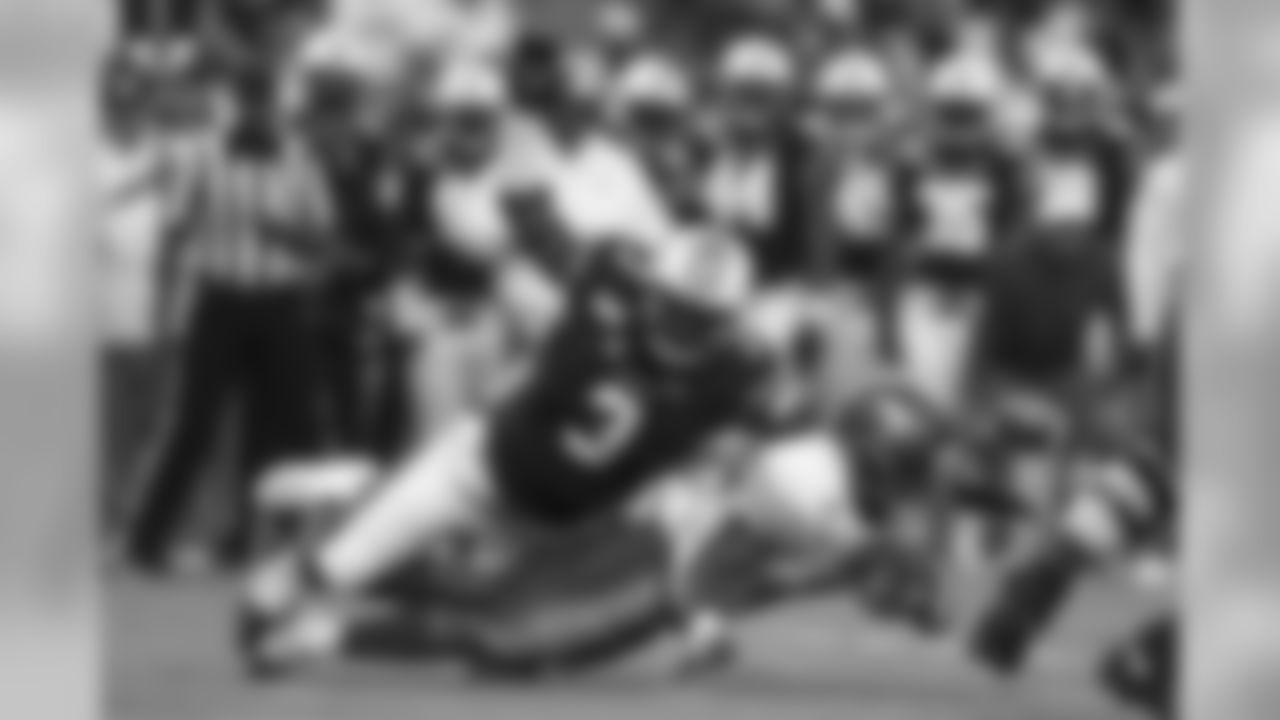
Marlon Davidson | DE | Auburn
Davidson plays the run very well on the edge of the defensive line, which could make him an option for the Bills on Day 2. He was certainly productive against some of the top offenses in the country as well.
Tulane running back Amare Jones is tackled for a loss by Auburn defensive end Marlon Davidson (3) during the first quarter of an NCAA college football game Saturday, Sept. 7, 2019, in Auburn, Ala. (AP Photo/Butch Dill)
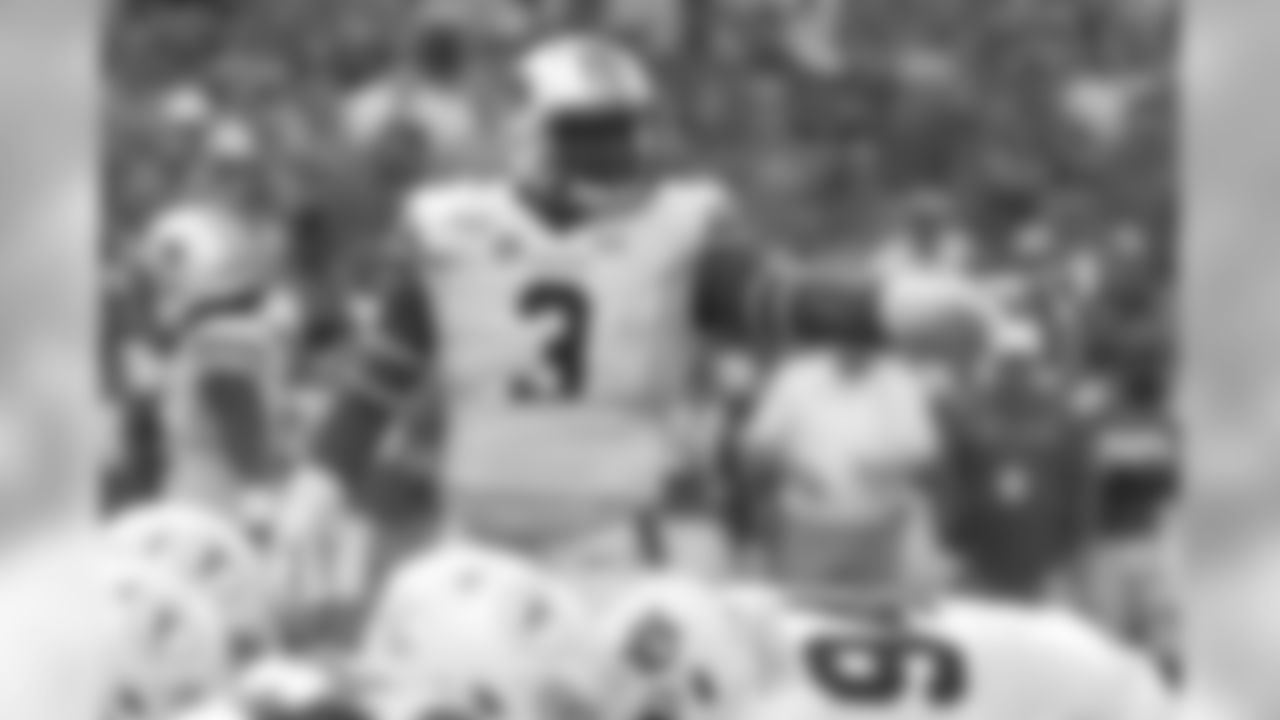
Marlon Davidson | DE | Auburn
Davidson plays the run very well on the edge of the defensive line, which could make him an option for the Bills on Day 2. He was certainly productive against some of the top offenses in the country as well.
FILE - In this Oct. 5, 2019, file photo, Auburn defensive end Marlon Davidson (3) signals to teammates before a play during the first half of an NCAA college football game against Florida, in Gainesville, Fla. Davidson was selected to The Associated Press All-Southeastern Conference football team, Monday, Dec. 9, 2019.(AP Photo/John Raoux, File)

Ezra Cleveland | OT | Boise State
Cleveland has a projectable frame and could be a nice piece to add to Buffalo's current group at OL.
Boise State offensive lineman Ezra Cleveland carries out a United States flag as the team takes the field to face Air Force in an NCAA college football game Saturday, Oct. 27, 2018, at Air Force Academy, Colo. (AP Photo/David Zalubowski)
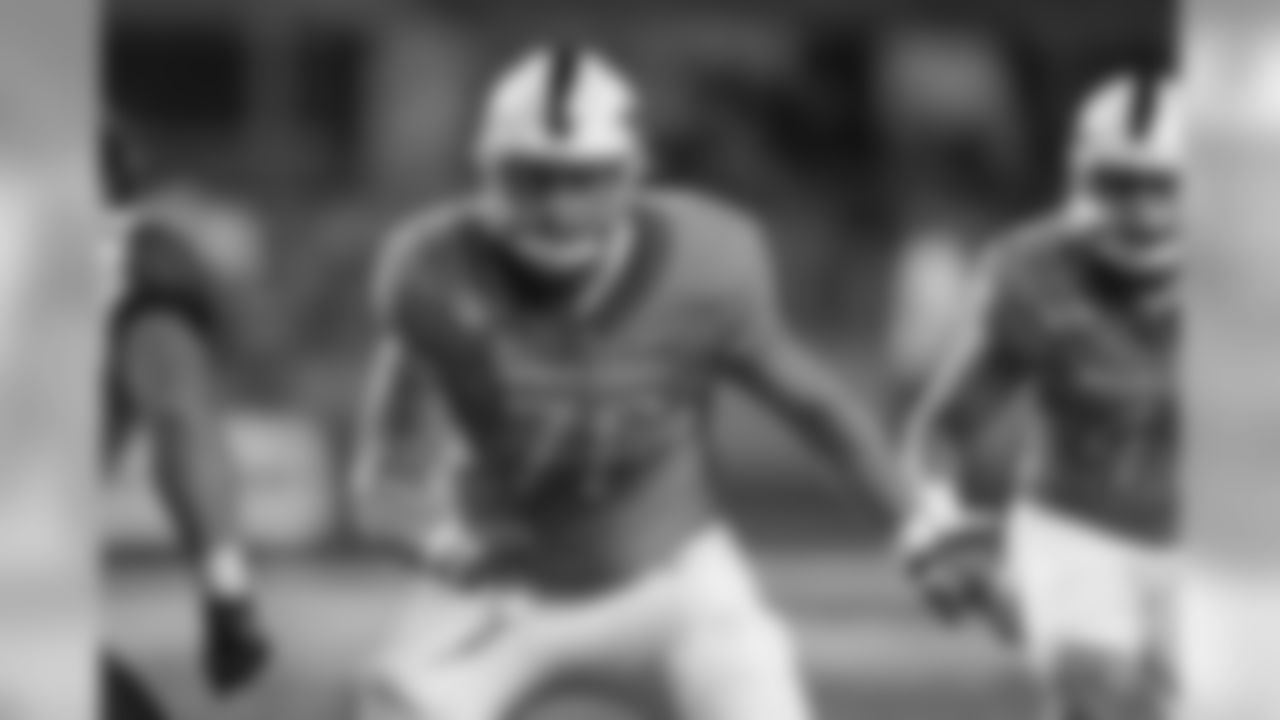
Ezra Cleveland | OT | Boise State
Cleveland has a projectable frame and could be a nice piece to add to Buffalo's current group at OL.
Boise State offensive lineman Ezra Cleveland (76) during the first half of an NCAA college football game against Hawaii, Saturday, Oct. 12, 2019, in Boise, Idaho. Boise State won 59-37. (AP Photo/Steve Conner)
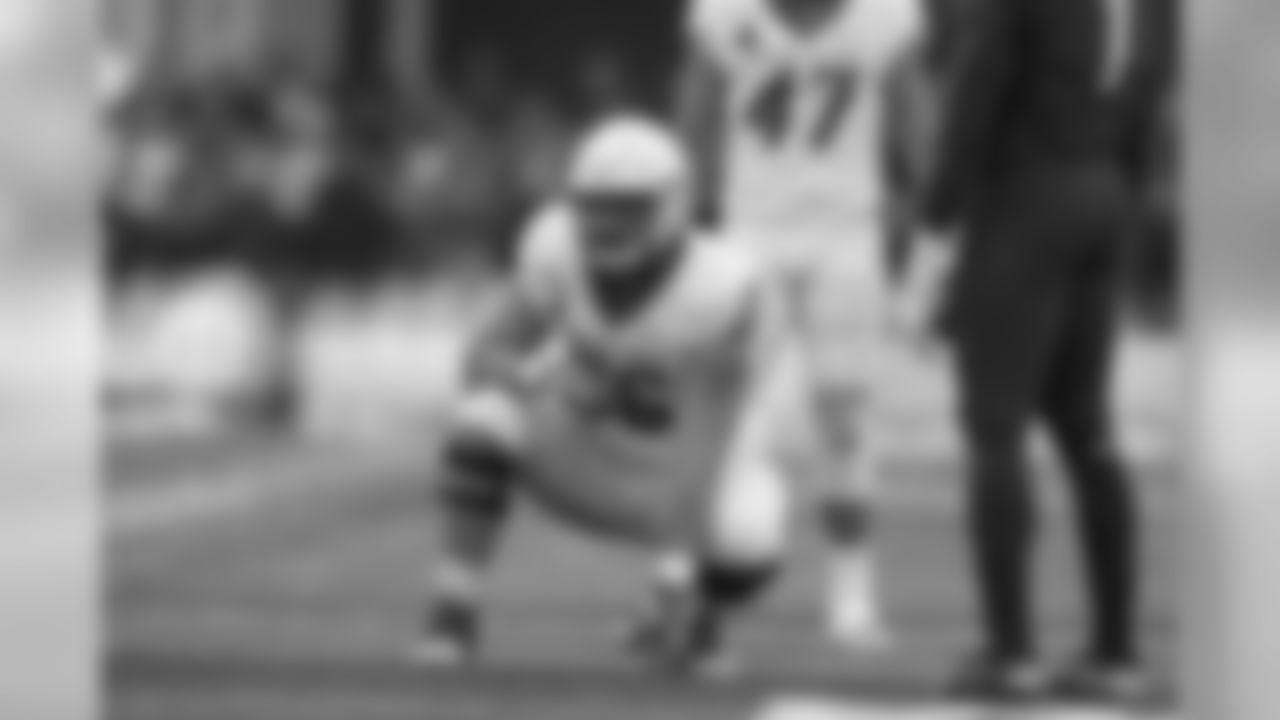
Ezra Cleveland | OT | Boise State
Cleveland has a projectable frame and could be a nice piece to add to Buffalo's current group at OL.
Boise State offensive lineman Ezra Cleveland in the first half of an NCAA college football game Friday, Nov. 29, 2019, in Fort Collins, Colo. (AP Photo/David Zalubowski)
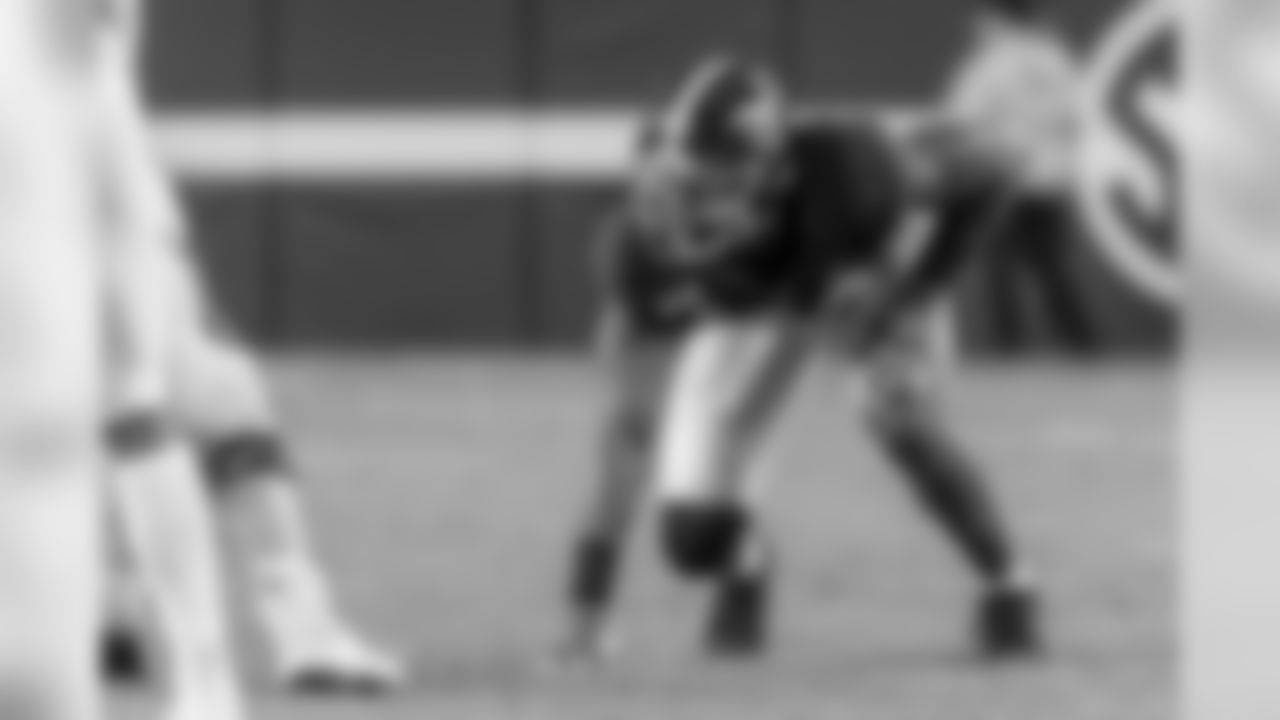
EDGE | Terrell Lewis | Alabama
Lewis could provide some "nasty" on the edge of Buffalo's pass rush and would be in line to help contribute on defense as a rookie.
Alabama linebacker Terrell Lewis (24) lines up on the edge to rush the quarterback against Arkansas during the second half of an NCAA college football game, Saturday, Oct. 26, 2019, in Tuscaloosa, Ala. (AP Photo/Vasha Hunt)

EDGE | Terrell Lewis | Alabama
Lewis could provide some "nasty" on the edge of Buffalo's pass rush and would be in line to help contribute on defense as a rookie.
Alabama linebacker Terrell Lewis (24) gets set against LSU during the second half of an NCAA football game Saturday, Nov. 9, 2019, in Tuscaloosa, Ala. LSU won 46-41. (AP Photo/Vasha Hunt)

EDGE | Terrell Lewis | Alabama
Lewis could provide some "nasty" on the edge of Buffalo's pass rush and would be in line to help contribute on defense as a rookie.
Alabama linebacker Terrell Lewis in an NCAA football game Saturday, Nov. 9, 2019, in Tuscaloosa, Ala. (AP Photo/Vasha Hunt)
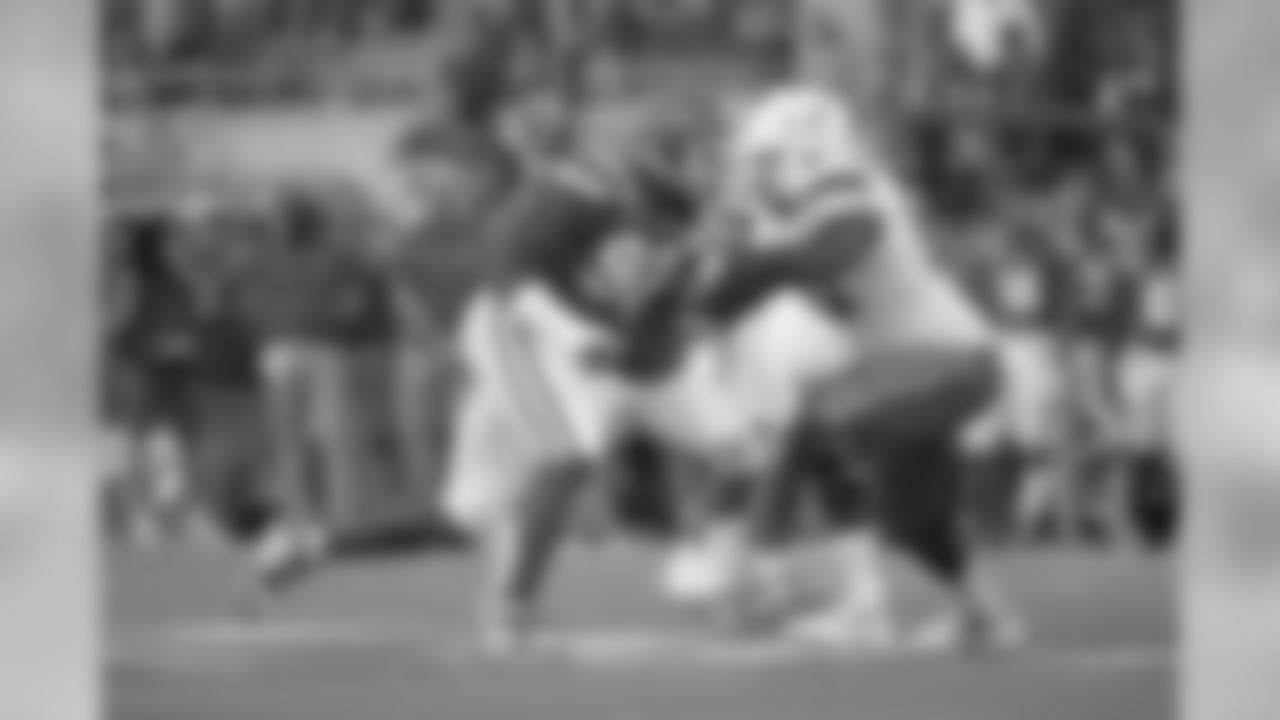
EDGE | Jabari Zuniga | Florida
Zuniga has all the tools teams look for in impact pass rushers, and could make sense for Buffalo at the right spot in the draft.
Miami offensive lineman Zion Nelson (60), right, blocks against Florida defensive lineman Jabari Zuniga (92) during the first half of an NCAA college football game Saturday, Aug. 24, 2019, in Orlando, Fla. (AP Photo/Phelan M. Ebenhack)
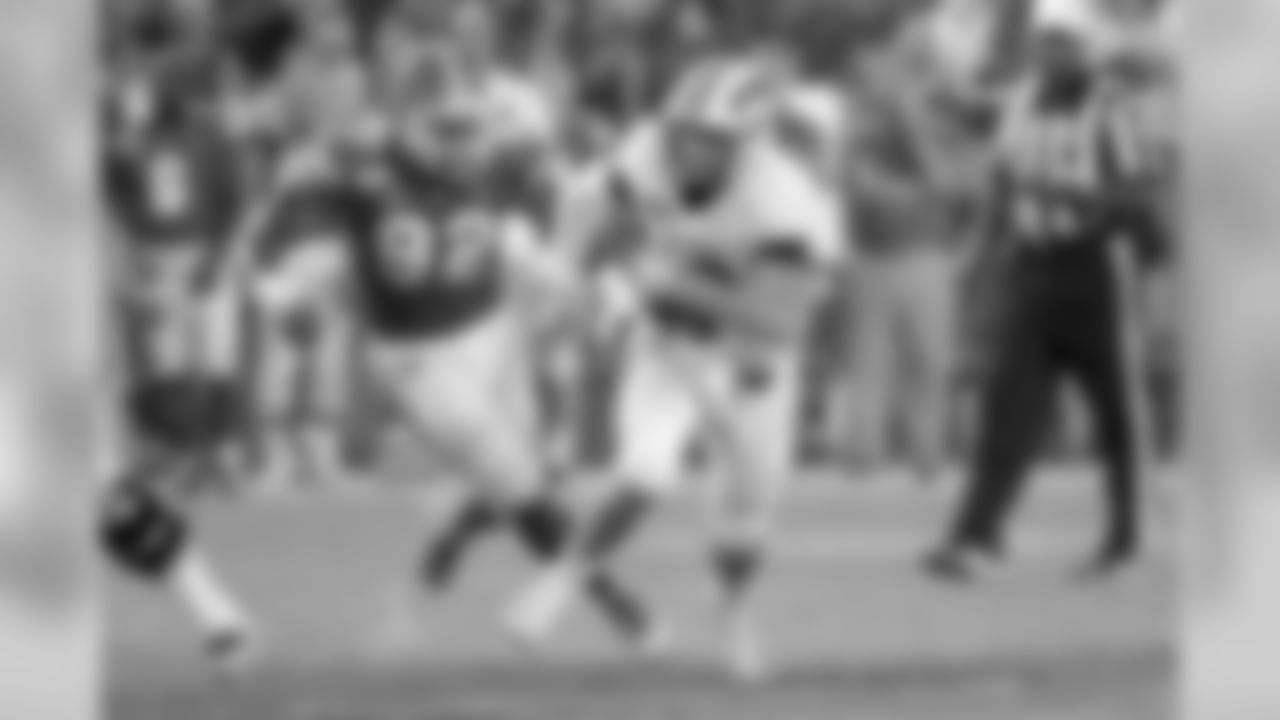
EDGE | Jabari Zuniga | Florida
Zuniga has all the tools teams look for in impact pass rushers, and could make sense for Buffalo at the right spot in the draft.
UT Martin quarterback John Bachus III scramble past Florida defensive lineman Jabari Zuniga (92) during the first half of an NCAA college football game, Saturday, Sept. 7, 2019, in Gainesville, Fla. (AP Photo/John Raoux)

EDGE | Jabari Zuniga | Florida
Zuniga has all the tools teams look for in impact pass rushers, and could make sense for Buffalo at the right spot in the draft.
Colorado State quarterback K.J. Carta-Samuels (1) scrambles as he is chased by Florida defensive lineman Jabari Zuniga (92) during the second half of an NCAA college football game, Saturday, Sept. 15, 2018, in Gainesville, Fla. (AP Photo/John Raoux)

EDGE | Jonathan Greenard | Florida
A super rangy edge rusher, Greenard could help make up for some of the lost pass rush production from last season.
Florida linebacker Jonathan Greenard takes up his position during the first half of an NCAA college football game against Missouri Saturday, Nov. 16, 2019, in Columbia, Mo. (AP Photo/Jeff Roberson)

EDGE | Jonathan Greenard | Florida
A super rangy edge rusher, Greenard could help make up for some of the lost pass rush production from last season.
Auburn quarterback Bo Nix, left, is hit by Florida linebacker Jonathan Greenard (58) as he releases the ball during the first half of an NCAA college football game, Saturday, Oct. 5, 2019, in Gainesville, Fla. (AP Photo/John Raoux)

EDGE | Jonathan Greenard | Florida
A super rangy edge rusher, Greenard could help make up for some of the lost pass rush production from last season.
Florida linebacker Jonathan Greenard (58) looks over his shoulder as he runs an 80-yard touchdown after recovering a Vanderbilt fumble during the second half of an NCAA college football game, Saturday, Nov. 9, 2019, in Gainesville, Fla. (AP Photo/John Raoux)

EDGE | Josh Uche | Michigan
Uche was used in a variety of ways at Michigan, and could play a Lorenzo Alexander-type role if called upon.
Michigan linebacker Josh Uche plays against Rutgers in the first half of an NCAA college football game in Ann Arbor, Mich., Saturday, Sept. 28, 2019. (AP Photo/Paul Sancya)

EDGE | Josh Uche | Michigan
Uche was used in a variety of ways at Michigan, and could play a Lorenzo Alexander-type role if called upon.
Michigan linebacker Josh Uche plays against Middle Tennessee in the second half of an NCAA college football game in Ann Arbor, Mich., Saturday, Aug. 31, 2019. (AP Photo/Paul Sancya)

EDGE | Josh Uche | Michigan
Uche was used in a variety of ways at Michigan, and could play a Lorenzo Alexander-type role if called upon.
Michigan linebacker Josh Uche (6) pressures Western Michigan quarterback Jon Wassink (16) in the second quarter of an NCAA college football game in Ann Arbor, Mich., Saturday, Sept. 8, 2018. (AP Photo/Tony Ding)

SAFETY | Kyle Dugger | Lenoir Rhyne
Dugger could be a versatile piece in Sean McDermott's defense, and could even play as a "big nickel" if needed.
South safety Kyle Dugger of Lenoir Rhyne (23) participates in drills as the South squad practices for the Senior Bowl Thursday, Jan. 23, 2020, in Mobile, Ala. (AP Photo/Butch Dill)

SAFETY | Kyle Dugger | Lenoir Rhyne
Dugger could be a versatile piece in Sean McDermott's defense, and could even play as a "big nickel" if needed.
South safety Kyle Dugger of Lenoir Rhyne (23) during the first half of the Senior Bowl college football game Saturday, Jan. 25, 2020, in Mobile, Ala. (AP Photo/Butch Dill)

SAFETY | Kyle Dugger | Lenoir Rhyne
Dugger could be a versatile piece in Sean McDermott's defense, and could even play as a "big nickel" if needed.
Lenoir Rhyne defensive back Kyle Dugger works out for scouts as the South squad runs drills during practice for the Senior Bowl Wednesday, Jan. 22, 2020, in Mobile, Ala. (AP Photo/Butch Dill)
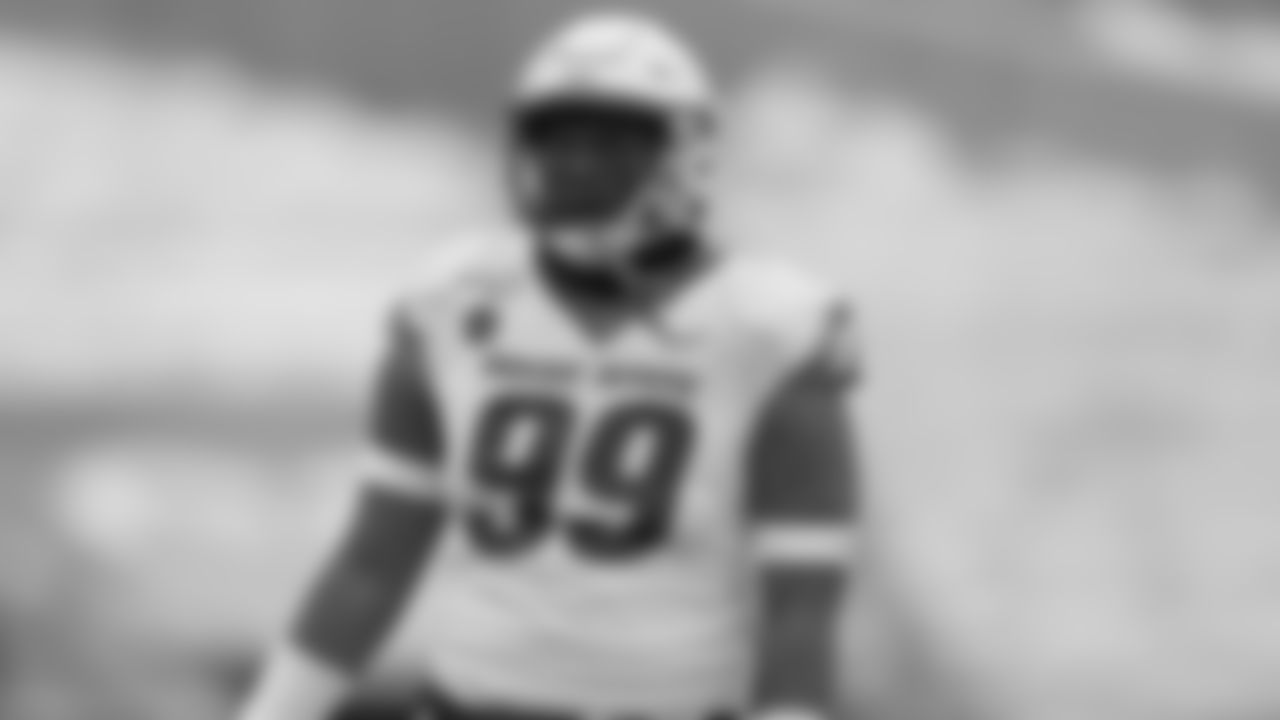
EDGE | Curtis Weaver | Boise State
Weaver is another versatile defensive lineman that could even slide inside at times to rush the passer. He might make sense for a DL that likes to rotate players a good amount.
Boise State linebacker Curtis Weaver (99) in the first half of an NCAA college football game Friday, Nov. 29, 2019, in Fort Collins, Colo. (AP Photo/David Zalubowski)

EDGE | Curtis Weaver | Boise State
Weaver is another versatile defensive lineman that could even slide inside at times to rush the passer. He might make sense for a DL that likes to rotate players a good amount.
Boise State linebacker Curtis Weaver (99) looks to the sidelines during in the first half of an NCAA college football game against Hawaii, Saturday, Oct. 12, 2019, in Boise, Idaho. Boise State won 59-37. (AP Photo/Steve Conner)
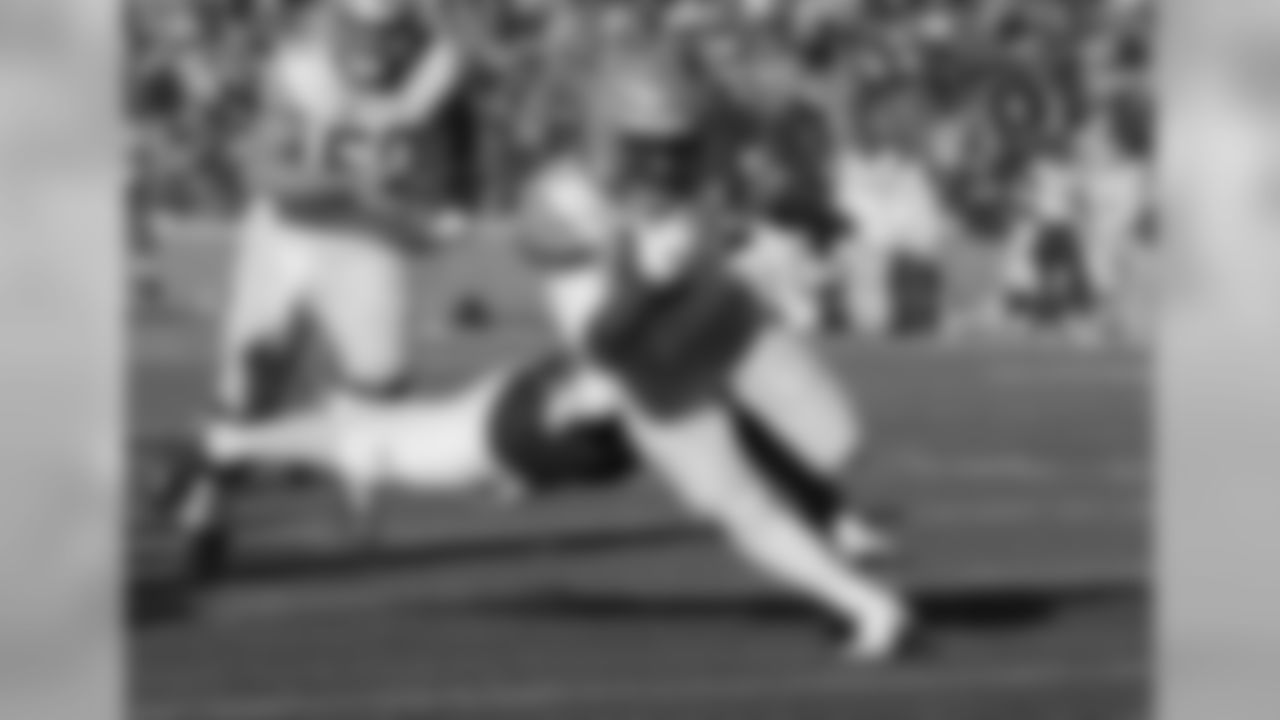
RB | Cam Akers | Florida State
Akers was a very productive back in college and is a capable pass catcher out of the backfield. He could be a solid contributor as a rookie.
Florida State running back Cam Akers runs for a touchdown in the second half of an NCAA college football game against Boston College, Saturday, Nov. 9, 2019, in Boston. (AP Photo/Bill Sikes)

RB | Cam Akers | Florida State
Akers was a very productive back in college and is a capable pass catcher out of the backfield. He could be a solid contributor as a rookie.
Florida State's Cam Akers runs in the open field during an NCAA college football game with Syracuse, Saturday, Oct. 26, 2019 in Tallahassee Fla. Florida State won 35-17. (AP Photo/Steve Cannon)

WR | Chase Claypool | Notre Dame
With a great frame and leaping ability, Claypool could team up with Josh Allen to make for a lethal redzone combination.
Notre Dame wide receiver Chase Claypool (83) reacts after a touchdown during the first half of an NCAA college football game against Bowling Green, Saturday, Oct. 5, 2019, in South Bend, Ind. (AP Photo/Darron Cummings)
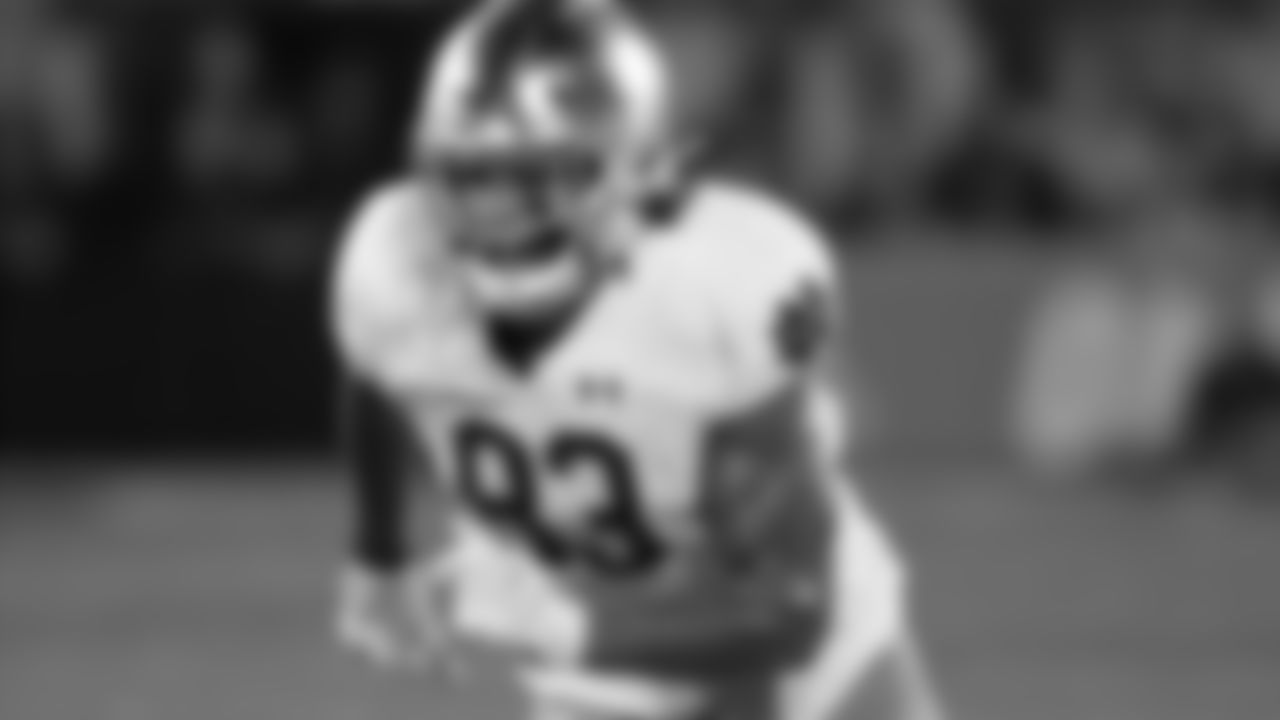
WR | Chase Claypool | Notre Dame
With a great frame and leaping ability, Claypool could team up with Josh Allen to make for a lethal redzone combination.
Notre Dame wide receiver Chase Claypool during an NCAA football game on Monday, Sept. 2 , 2019 in Louisville , Ky . (AP Photo/Tony Tribble)

WR | Chase Claypool | Notre Dame
With a great frame and leaping ability, Claypool could team up with Josh Allen to make for a lethal redzone combination.
Notre Dame wide receiver Chase Claypool (83) runs during the first half of an NCAA college football game against Navy, Saturday, Nov. 16, 2019, in South Bend, Ind.(AP Photo/Darron Cummings)

RB | Jonathan Taylor | Wisconsin
One of the best running backs to ever play college football, Taylor is arguably one of the most "pro-ready" prospects in the draft. He had over 6,000 yards rushing in three seasons.
FILE - In this Dec. 7, 2019, file photo, Wisconsin running back Jonathan Taylor (23) runs for a touchdown past Ohio State cornerback Shaun Wade (24) during the first half of the Big Ten championship NCAA college football game, in Indianapolis. Taylor was selected to The Associated Press All-Big Ten Conference team, Wednesday, Dec. 11, 2019. (AP Photo/Michael Conroy, File)

RB | Jonathan Taylor | Wisconsin
One of the best running backs to ever play college football, Taylor is arguably one of the most "pro-ready" prospects in the draft. He had over 6,000 yards rushing in three seasons.
Wisconsin running back Jonathan Taylor celebrates a touchdown against Michigan State during the second half of an NCAA college football game Saturday, Oct. 12, 2019, in Madison, Wis. Wisconsin won 38-0. (AP Photo/Andy Manis)

RB | Jonathan Taylor | Wisconsin
One of the best running backs to ever play college football, Taylor is arguably one of the most "pro-ready" prospects in the draft. He had over 6,000 yards rushing in three seasons.
Wisconsin's Jonathan Taylor runs during the second half of an NCAA college football game against Purdue Saturday, Nov. 23, 2019, in Madison, Wis. (AP Photo/Morry Gash)
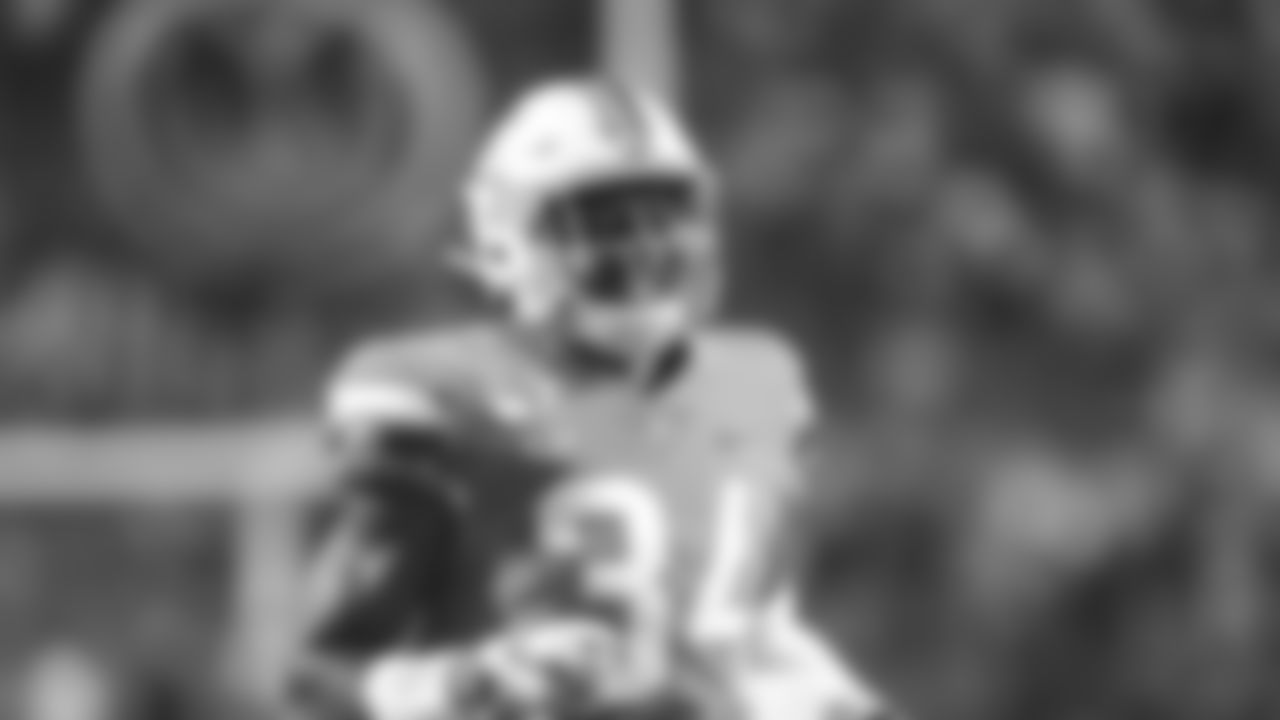
CB | Bryce Hall | Virginia
He was one of the best corners in college football, and could be a nice prospect for the Bills to groom behind their current group of defensive backs.
Virginia cornerback Bryce Hall (34) during an NCAA college football game in Charlottesville, Va., Friday, Sept. 6, 2019. Virginia defeated William & Mary 51-17. (AP Photo/Andrew Shurtleff)

CB | Bryce Hall | Virginia
He was one of the best corners in college football, and could be a nice prospect for the Bills to groom behind their current group of defensive backs.
Bryce Hall #34 of the Virginia Cavaliers in action against the Pittsburgh Panthers during an NCAA football game on Saturday, Aug. 31, 2019 in Pittsburgh. (AP Photo/Jared Wickerham)
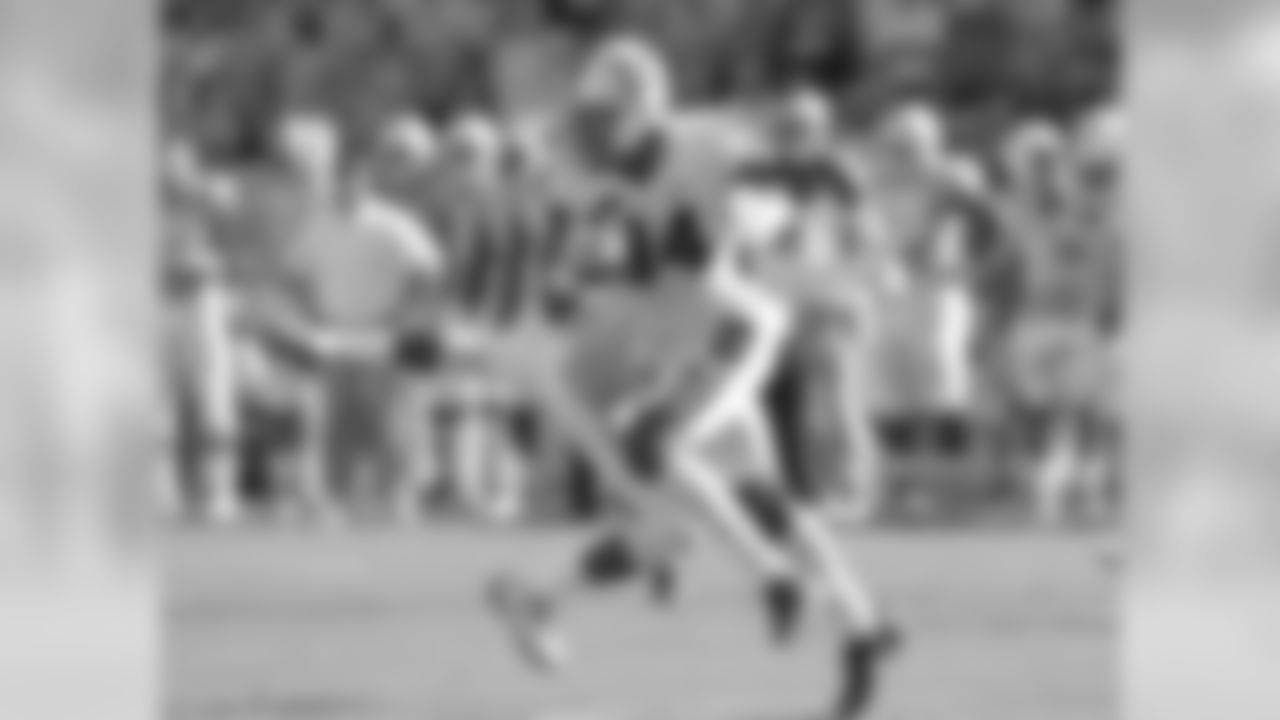
CB | Bryce Hall | Virginia
He was one of the best corners in college football, and could be a nice prospect for the Bills to groom behind their current group of defensive backs.
Virginia's Bryce Hall (34) runs the ball following an interception as North Carolina's Jordan Cunningham tries to make the tackle during the first half an NCAA college football game in Chapel Hill, N.C., Saturday, Oct. 14, 2017. (AP Photo/Gerry Broome)
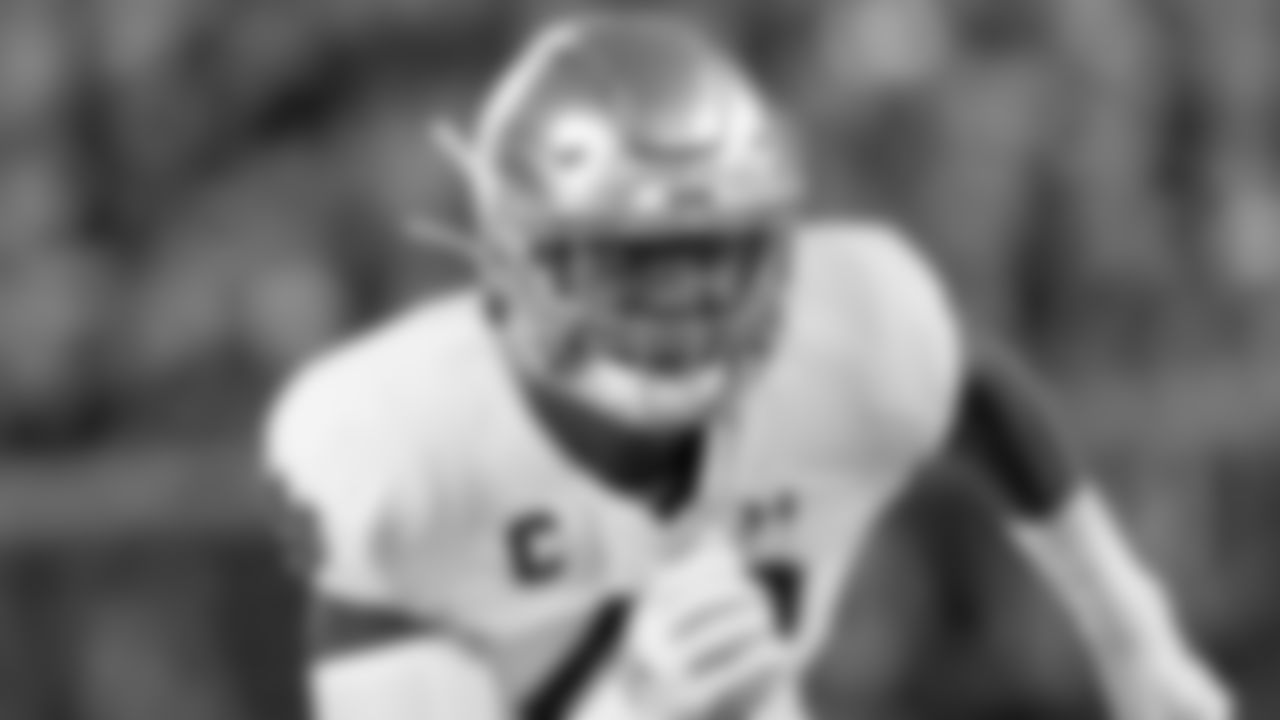
DE | Julian Okwara | Notre Dame
A balanced DE, Okwara could play a variety of roles on Buffalo's defense and bring need some more "nasty" up front.
Notre Dame defensive lineman Julian Okwara during an NCAA football game on Monday, Sept. 2 , 2019 in Louisville , Ky . (AP Photo/Tony Tribble)

DE | Julian Okwara | Notre Dame
A balanced DE, Okwara could play a variety of roles on Buffalo's defense and bring need some more "nasty" up front.
Notre Dame defensive lineman Julian Okwara (42) works against Georgia during the second half of an NCAA college football game, Saturday, Sept. 21, 2019, in Athens, Ga. (AP Photo/Mike Stewart)
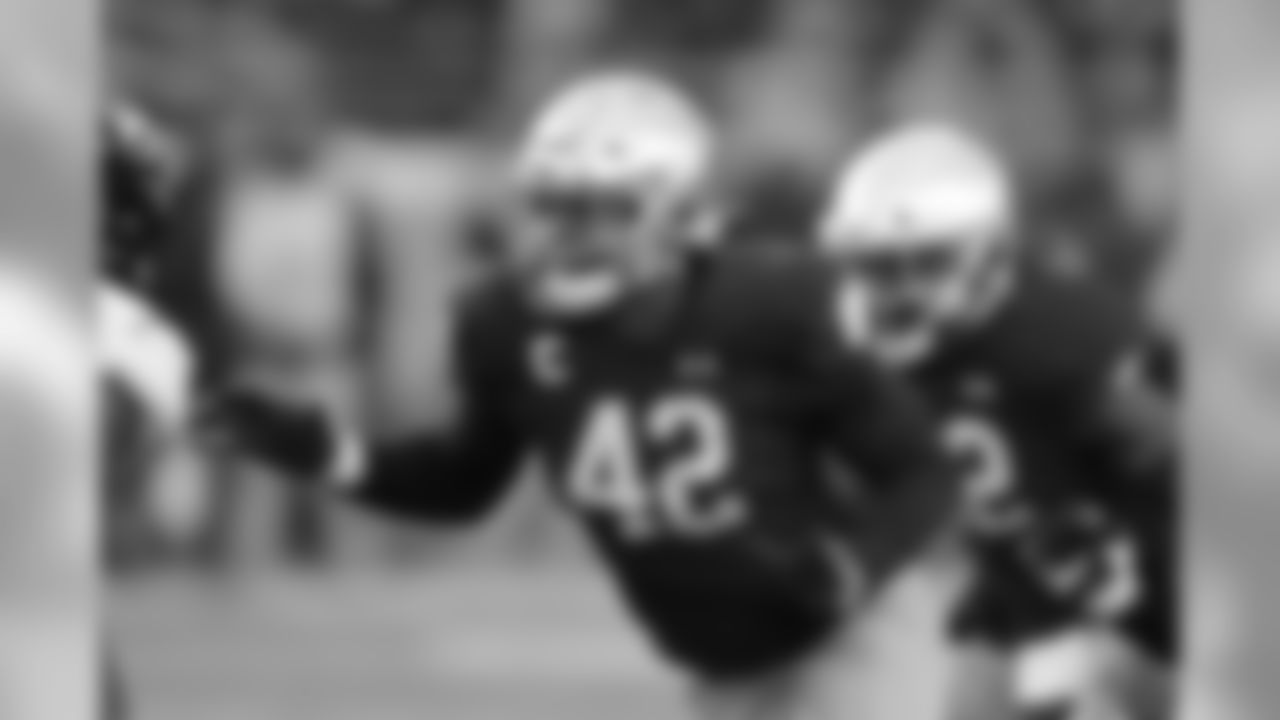
DE | Julian Okwara | Notre Dame
A balanced DE, Okwara could play a variety of roles on Buffalo's defense and bring need some more "nasty" up front.
Notre Dame defensive lineman Julian Okwara (42) in action during the second half of an NCAA college football game against Virginia Tech, Saturday, Nov. 2, 2019, in South Bend, Ind. (AP Photo/Carlos Osorio)
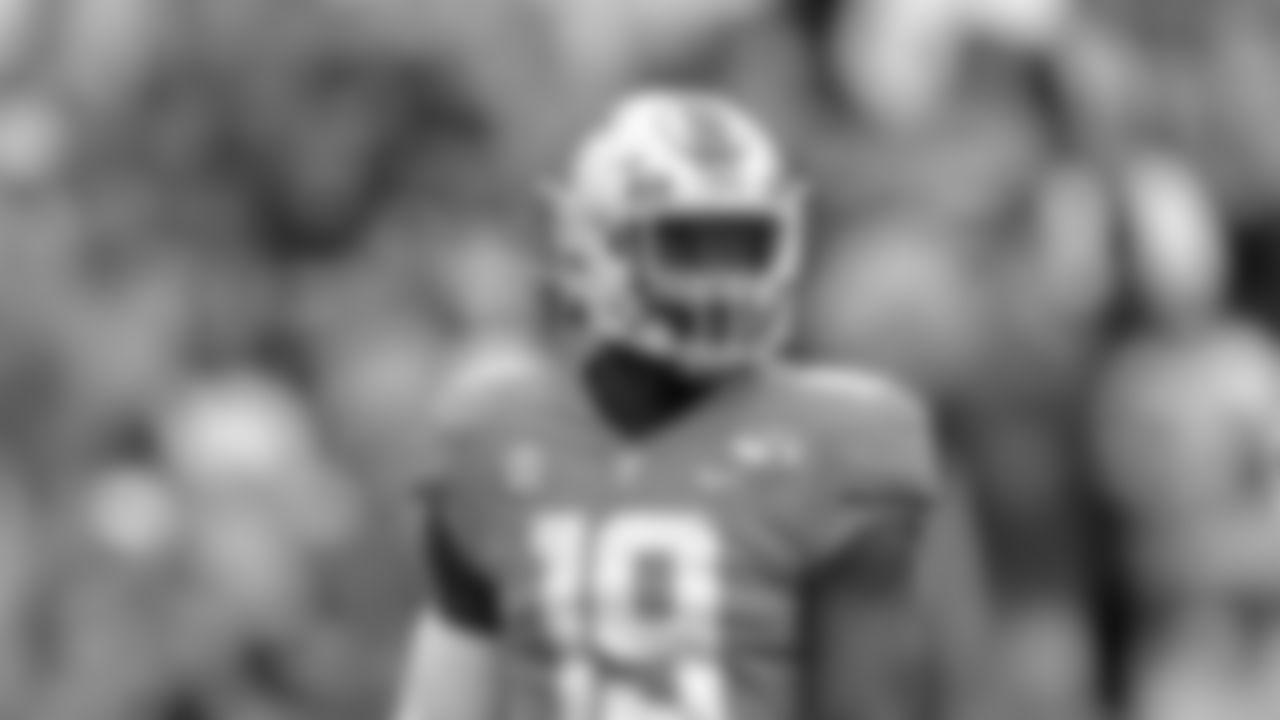
EDGE | Darrell Taylor | Tennessee
He was one of the most consistent pass rushers in college football, and his athletic traits are hard to ignore. Taylor be a great value pick for Buffalo on defense.
Tennessee linebacker Darrell Taylor (19) plays in the first half of an NCAA college football game against South Carolina, Saturday, Oct. 26, 2019, in Knoxville, Tenn. (AP Photo/Wade Payne)
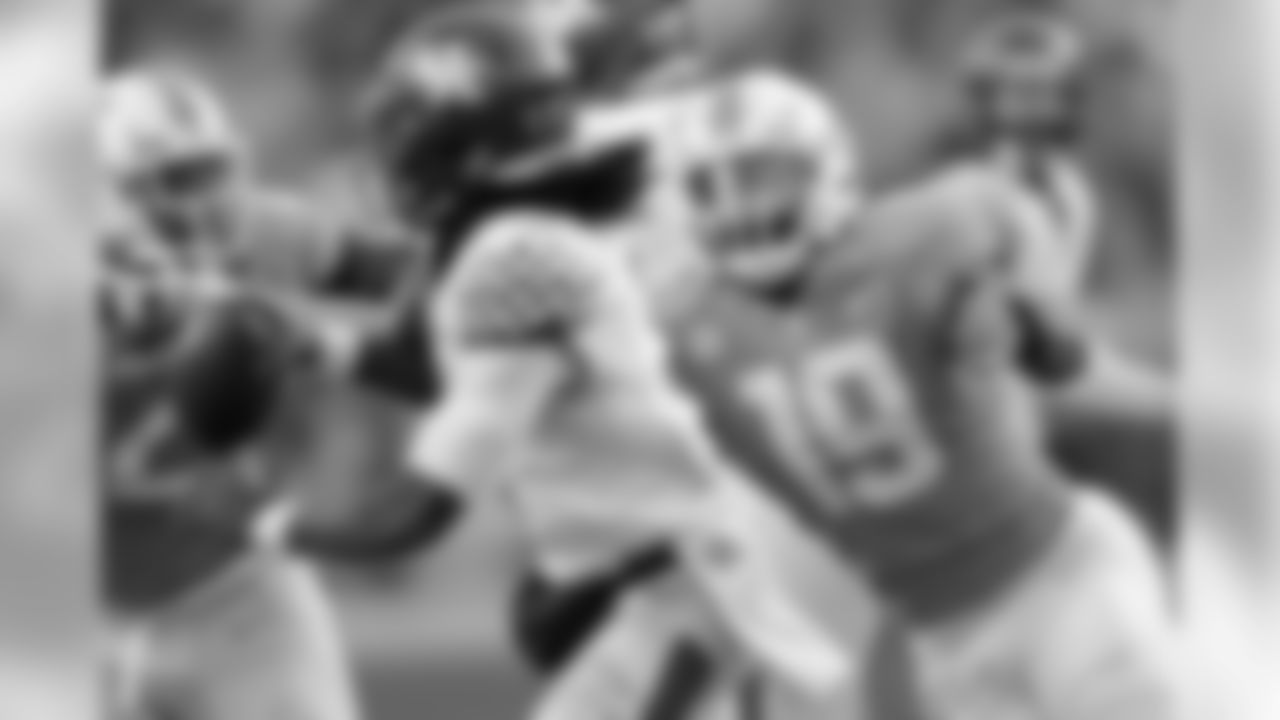
EDGE | Darrell Taylor | Tennessee
He was one of the most consistent pass rushers in college football, and his athletic traits are hard to ignore. Taylor be a great value pick for Buffalo on defense.
FILE - In this Nov. 10, 2018, file photo, Kentucky quarterback Terry Wilson (3) is pressured by Tennessee linebacker Darrell Taylor (19) in the first half of an NCAA college football game in Knoxville, Tenn. Darrell Taylor is coming off a breakthrough season but believes he’s capable of doing even better. Taylor recorded eight sacks last year, the most of any Southeastern Conference player who’s back this fall. (AP Photo/Wade Payne, File)
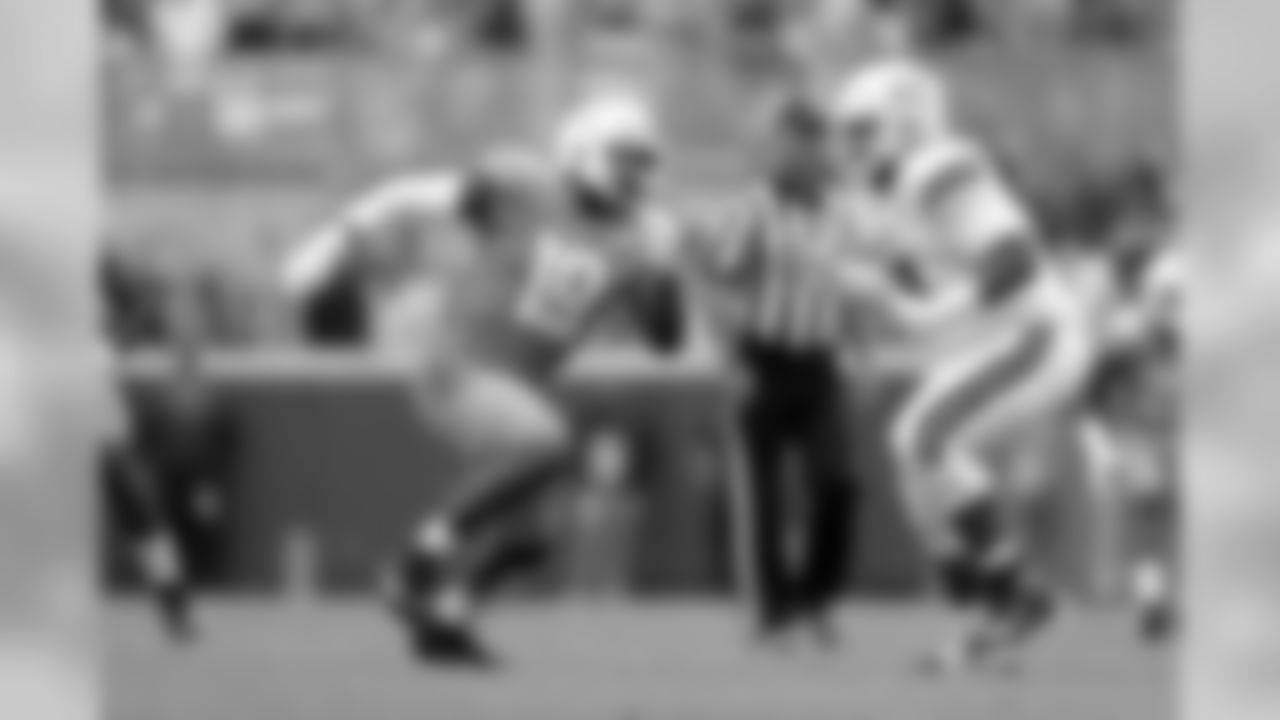
EDGE | Darrell Taylor | Tennessee
He was one of the most consistent pass rushers in college football, and his athletic traits are hard to ignore. Taylor be a great value pick for Buffalo on defense.
Tennessee linebacker Darrell Taylor (19) plays against Mississippi State in the second half of an NCAA college football game Saturday, Oct. 12, 2019, in Knoxville, Tenn. (AP Photo/Wade Payne)

CB | Shyheim Carter | Alabama
Carter can cover a ton of ground and make plays on the ball, which is exactly what Sean McDermott and Leslie Frazier are looking for in Buffalo's defense.
Alabama defensive back Shyheim Carter (5) during the second half of an NCAA college football game against Southern Miss, Saturday, Sept. 21, 2019, in Tuscaloosa, Ala. (AP Photo/Vasha Hunt)

CB | Shyheim Carter | Alabama
Carter can cover a ton of ground and make plays on the ball, which is exactly what Sean McDermott and Leslie Frazier are looking for in Buffalo's defense.
Alabama defensive back Shyheim Carter in an NCAA football game Saturday, Nov. 9, 2019, in Tuscaloosa, Ala. (AP Photo/Vasha Hunt)

CB | Shyheim Carter | Alabama
Carter can cover a ton of ground and make plays on the ball, which is exactly what Sean McDermott and Leslie Frazier are looking for in Buffalo's defense.
Alabama defensive back Shyheim Carter (5) warms up before an NCAA college football game against Tennessee, Saturday, Oct. 19, 2019, in Tuscaloosa, Ala. (AP Photo/Vasha Hunt)

DE | Trevis Gipson | Tulsa
Long and fast. Trevis Gipson could be a sleeper prospect that could make a big impact as a rookie with his pass rushing ability.
Tulsa defensive end Trevis Gipson (15) attempts a tackle on Michigan State running back Elijah Collins (24) during the second half of an NCAA football game on Friday, Aug. 30, 2019 in East Lansing, Mich. Michigan State won 28-7. (AP Photo/Tony Ding)
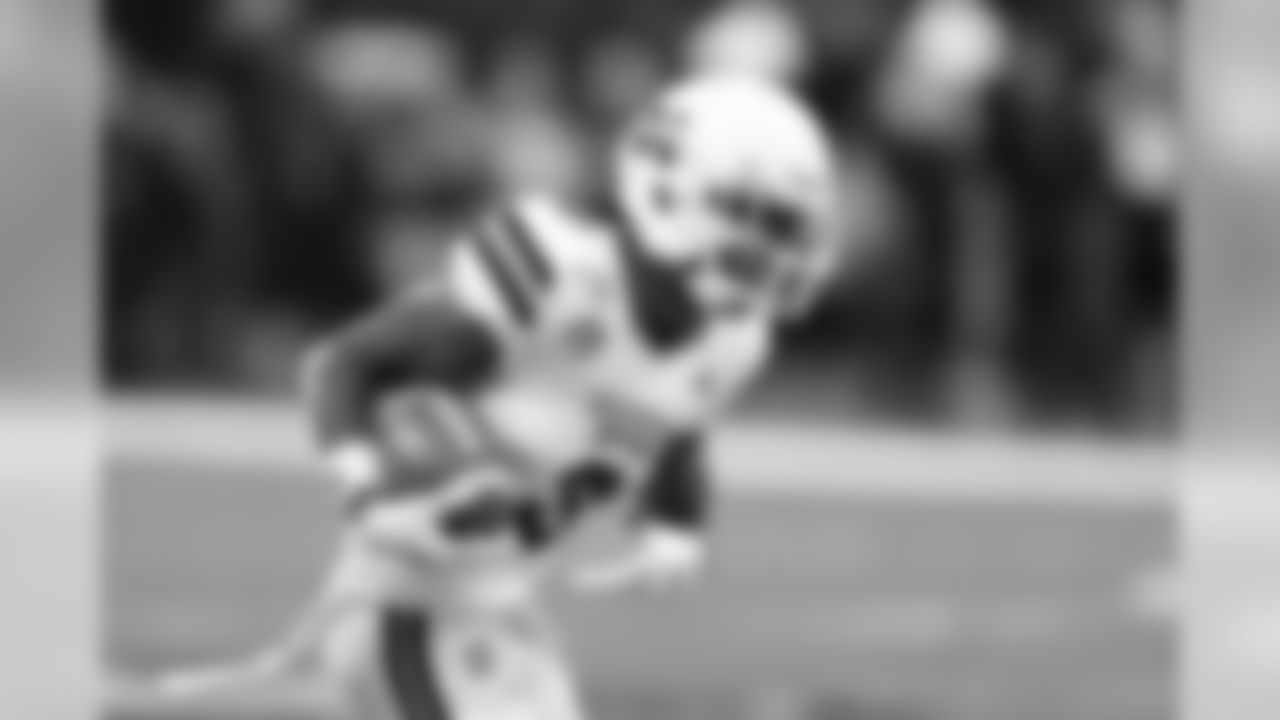
CB | Cameron Dantzler | Mississippi State
Dantzler is great in press coverage, and could be a good candidate to learn from Buffalo's current group at CB.
Mississippi State cornerback Cameron Dantzler (3) returns an interception against Louisiana-Lafayette during the first half of an NCAA college football game in New Orleans, Saturday, Aug. 31, 2019. (AP Photo/Chuck Cook)

CB | Cameron Dantzler | Mississippi State
Dantzler is great in press coverage, and could be a good candidate to learn from Buffalo's current group at CB.
Mississippi State cornerback Cameron Dantzler (3) defends Louisiana-Lafayette wide receiver Ja'Marcus Bradley (2) in the second half of an NCAA college football game in New Orleans, Saturday, Aug. 31, 2019. Mississippi State won, 38-28. (AP Photo/Chuck Cook)

DT | Ross Blacklock | TCU
If Buffalo looks to add more size on the interior of the DL to help with run defense, Blacklock could make a lot of sense in the second or third round.
TCU defensive tackle Ross Blacklock (90) rallies his teammates during the second half of an NCAA college football game against Baylor, Friday, Nov. 24, 2017, in Fort Worth, Texas. TCU won 45-22. (AP Photo/Brandon Wade)

DT | Ross Blacklock | TCU
If Buffalo looks to add more size on the interior of the DL to help with run defense, Blacklock could make a lot of sense in the second or third round.
TCU defensive tackle Ross Blacklock poses for a portrait during the 2020 NFL Scouting Combine, Wednesday, Feb. 28, 2020 in Indianapolis. (Todd Rosenberg via AP)
The pick prior to James was made by Buffalo when the team traded up to 16 to land LB Tremaine Edmunds, who though he has played just middle linebacker in his two years with the Bills, has seemingly limitless range.
"With position less players it's just about getting the guy on my team and I'll figure out where to use him," said NBC Sports' columnist Peter King. "If you look at Edmunds in Buffalo right now, he's a guy that I think might not play as many positions, but he's extremely dangerous all over at the back end of the field. I think we're looking at that as more and more of a trend in the NFL."
"I do think players are becoming bigger, stronger and faster every year," Bills GM Brandon Beane told Buffalobills.com. "The short answer is it's a matchup league. You're trying as an offense to find where you can get mismatches. You look at how Carolina is using Christian McCaffrey or New Orleans with Alvin Kamara. So to flip that on the defensive side, you've got Derwin James, Jamal Adams and then Isaiah Simmons coming in this year's draft. You've got to find answers for some of these pieces. You've also got more quarterbacks who are mobile."
Even up front, pass rushing defensive ends are lighter and faster than they were 10 to 15 years ago. It's more common to see 240 to 255-pound edge rushers. Those players used to be targeted by opposing coordinators who would run right at them, and some still do. But even that has changed with those lighter players mastering leverage and being more effective against the run. So what was the offense's answer to that?
Use the entire field.
"Offenses spread the field much more now than 20 years ago and defenses need players who can defend a lot of grass without giving up the size and strength you still covet," said Telesco. "It is a constant move and counter move by offenses and defenses."
Necessity feeds the desire for versatility
Beane remembers years ago when he was with the Carolina Panthers how the club transitioned a college safety in Thomas Davis to a linebacker role in the NFL.
"We drafted Thomas Davis in Carolina for one reason, to stop Michael Vick," said Beane. "We needed to have linebackers who could keep up with him. Mobile quarterbacks are even more prevalent in our league now. You've got to have players at the second level who can cover and also chase these quarterbacks down."
With more mobile signal callers the task has become more frequent for NFL defenses week to week. Buffalo's Josh Allen, Baltimore's Lamar Jackson and Houston's Deshaun Watson are quarterbacks who can simply run away from that faster edge pressure.
To combat dynamic tight ends and bigger and taller slot receivers, defensive coordinators are looking for 'big nickel' defenders, which is a hybrid type player that has the body of a weakside linebacker, but the speed and athleticism of a slot corner.
The Bills utilized a pair of their safeties in this role last season in Dean Marlowe and Siran Neal, who typically played against heavier offensive personnel groupings like two back or two tight end sets.
"On the defensive side of the ball, you're trying to find dynamic playmakers because the skill talent that's coming in on offense is going to continue to get faster and more athletic," said NFL Network draft analyst Daniel Jeremiah. "That's what the college game is and that's made its way to the NFL. You better have linebackers that can run all day long and cover and you better have safeties that can be interchangeable, can play high, can play low, and can really run with range. You want to have a couple of edge rushers and you better have speed everywhere else. That's kind of how you're building teams right now."
But it's not just the defensive side of the ball that's trying to have all its bases covered. The offense is trying to have versatile personnel on the field so they can go up tempo, not make any substitutions and still maintain an air of unpredictability.
"If you're facing a defense and you go 21 personnel (two backs, one tight end) and they've got to play the run, and every guy on offense can catch the ball, well out of these five guys who can catch the ball we have three good mismatches," said Beane. "So let's keep them in this defensive personnel group as long as we can and go tempo and see if we can get a big play or at least get the ball into scoring position. It's finding your best personnel versus theirs. That's why game plans are so important."
Some of the most versatile prospects in the 2020 draft
It's also why a player like Clemson's Isaiah Simmons is expected to be a top five pick this spring. He is an answer to the very problem Beane outlined. At 6-3 ½ and 238 pounds he has the size to play the run. He also runs a 4.39 40-time and played a good deal of safety in college. So if he has to cover an athletic tight end or receiver man-to-man it's an assignment he can easily handle.
"This guy from Clemson named Isaiah Simmons, I don't even know what position you would call him," said King. "One coach said to me, 'I could see him play safety. I could see him play any linebacker position and I could also see him playing slot corner if you had an urgent need.' You'd probably have him more as a safety or an edge guy in your linebacker unit.
"Just imagine you're going to play 65-70 percent nickel defense. That means that you have mostly seven back end players on the field very often. If you have seven back end players and sometimes eight, imagine having a guy who can play anywhere on that back end. That's Simmons."
A couple of the top safeties in this draft class are small school players in Southern Illinois' Jeremy Chinn and Lenoir-Rhyne's Kyle Dugger. Both have great back-seven flexibility as well. They can play the 'big nickel,' safety or even slot corner if necessary.
Finding linebackers who can play coverage and also pressure the quarterback on obvious passing downs is the other kind of flexibility NFL personnel executives are seeking. A prospect like Wisconsin's Zack Baun is such an example. He played all three linebacker positions at times during his three-year college career, but also rushed the passer posting 15 career sacks. In coverage he had four pass breakups, three forced fumbles and two interceptions, one of which was returned for a touchdown.
"Zack Baun is a guy you can move around and get a lot of production as a pass rusher," said ESPN NFL draft analyst Mel Kiper. "You can do a lot of things with him inside, outside and he certainly was a more versatile guy. I think he's intriguing."
But as teams seek versatile answers on defense, there appear to be just as many freakish type talents available on the offensive side of the ball in the draft. NFL clubs are looking for the next Deebo Samuel, who proved to be a valuable and versatile offensive weapon as a rookie receiver/rusher and helped San Francisco win the NFC title last season.
Colorado prospect Laviska Shenault is listed as a receiver, but much like Samuel offers a great deal more than that.
"I think Shenault would be a fun toy for a team as somebody that could play in the slot," said Jeremiah. "You can use the fly sweep stuff with him. You could put him in the backfield and hand him the ball. He's done that a bunch at Colorado. Shenault would be a heck of a lot of fun. Finding that kind of player is going to be a theme for a lot of these teams."
Another physical specimen with uncommon athletic ability is Notre Dame's Chase Claypool, who was a dynamic aerial weapon for the Irish. At 6-4 and 238 pounds he looks more like a tight end, at least until he ran a 4.42 40-time at the combine and posted a 40 ½-inch vertical.
"We're not labeling guys as much anymore and Chase Claypool is just a big mismatch guy in the passing game," said Senior Bowl Executive Director Jim Nagy, who invited Claypool to Mobile. "So whether he's a big wide receiver or a tight end, whatever you want to call him, he's a big strong dude that can go up and get the football. And a smart coordinator will find a role for that guy."
Even later in the draft, a player like Memphis RB/WR Antonio Gibson is a talent with 4.39 speed who had almost as many carries as he did receptions in his two seasons with the Tigers. Most teams see him primarily as a running back, but having experience splitting out as a true receiver increases his value.
"I think what you're trying to do in the league today is have multiple pieces and be able to create some personnel mismatches without substituting players on and off the field so that you can run tempo," said ESPN NFL draft analyst Todd McShay. "And I think a good number of these prospects fit that bill really well."
Athletes will dictate the game's future
As long as there are offensive and defensive lines there will always be designated positions in football. But off the ball assigned positions are getting blurred on offense and defense as game planners search every week for an edge. And those athletes who can serve in multiple roles and provide multiple answers will be the ones on the field the most.
"When you have offenses trying to manipulate personnel and get certain groups on the field like the Ravens did last year when they had three tight ends that they put their opponents in certain sets and then split the tight ends out, you better have more versatile players that can do multiple things," said Jeremiah. "So with a guy like Isaiah Simmons, whether you want to list him as a linebacker or safety, I know you plug him into that defensive scheme and week by week you can deploy him in different ways depending on what the strength of your opponent is. That's why he has so much value.
"Putting these kinds of players in little position boxes I think that's going to go away eventually."















